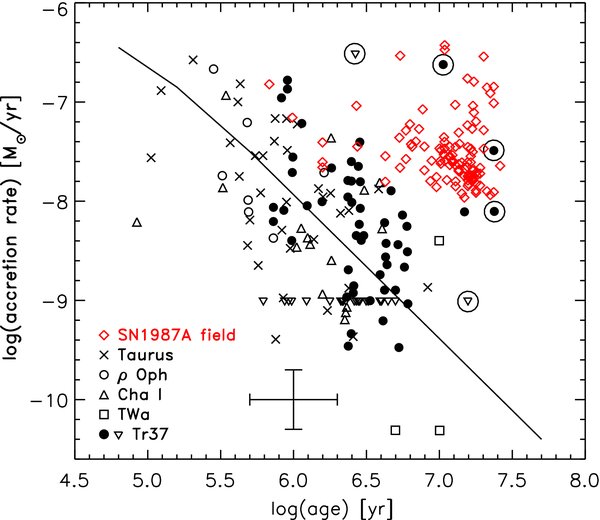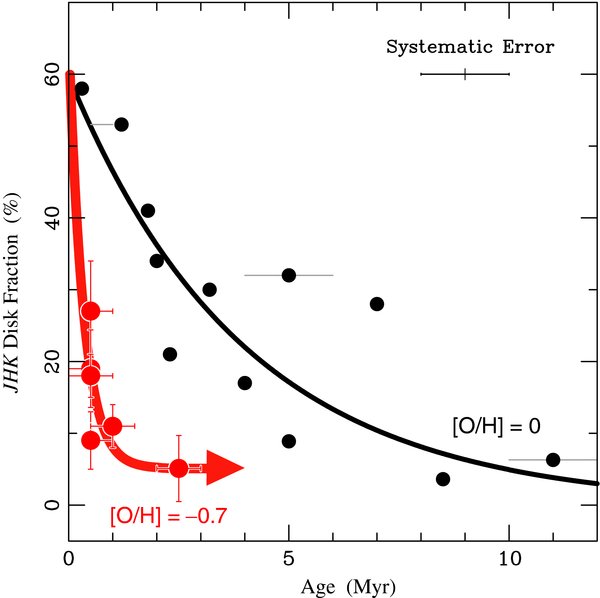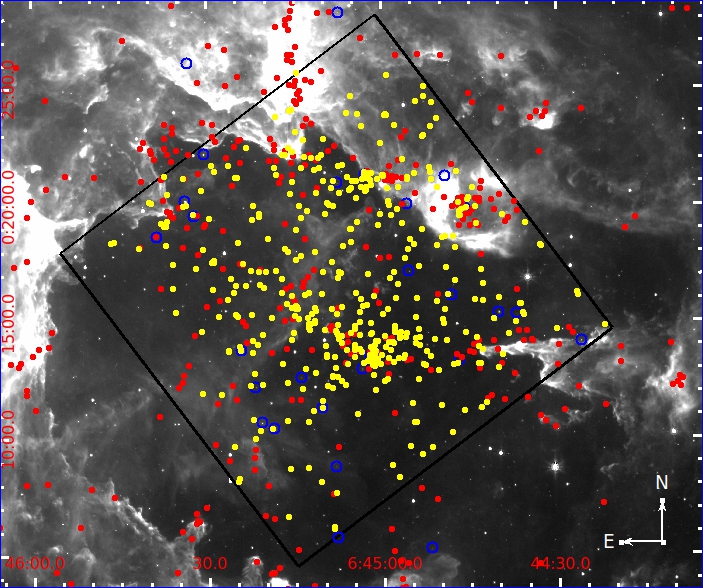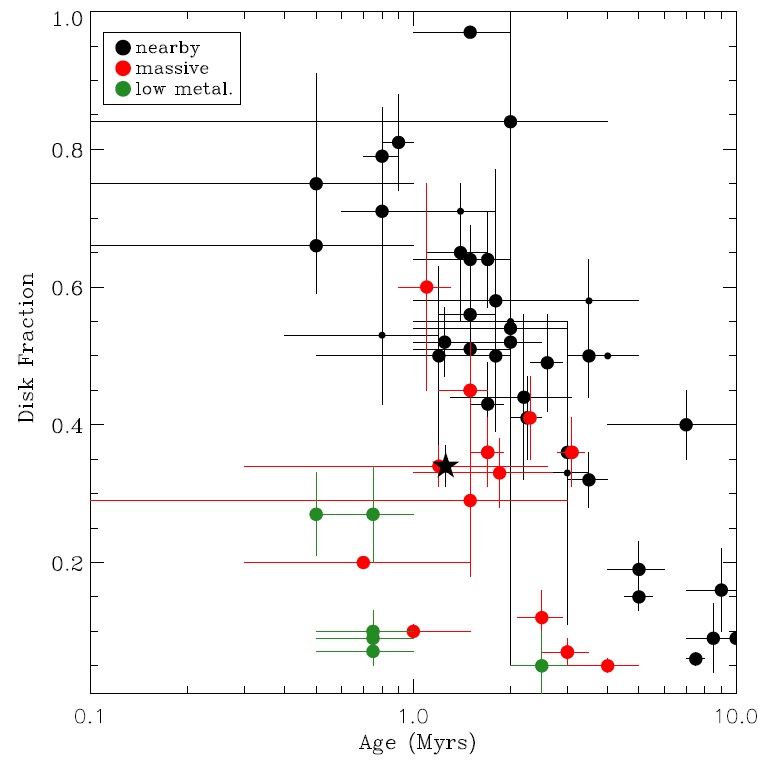DISK DISPERSAL AT LOW METALLICITY
Metallicity sets important disks properties and thus it can impact disk dispersal timescale. For instance, dust opacity declines at low metallicity, resulting in a more efficient penetration of energetic photons in disks [Gorti & Hollenbach 2009]. This can increases the effectiveness of magnetic instabilities, which are important for accretion [Hartmann 2009] and magnetically-driven winds [Suzuki+2010]. As a consequence of this, disks dispersal may occur faster in low-metallicity environments [e.g. Ercolano+2009].
Observational studies provide contradictory results: Studies of the stellar population of a few low-metallicity star forming regions in the Outer Galaxy found very low disk fractions compared with regions with a metallicity closer to Solar values [e.g., Yasui+2016a,b]. On the other hands, studies of actively accreting Young Stellar Objects in the Magellanic Clouds found more intense and long-lived accretion rates compared with disk in the Milky Way [e.g., de Marchi+2017].
 
Left panel: Mass accretion rates of stars with disks in Solar metallicity regions (black) and in the low metallicity region around SN1987A in the Large Magellanic Cloud [de Marchi et al. 2010].
Right panel: Disk fraction as a function of clusters age. The black dots are values of clusters with Solar metallicity, red dots with low metallicity in the Outer Galaxy [Yasui et al. 2010].
|
References:
- De Marchi, G., Panagia, N., & Beccari, G. 2017, ApJ, 846, 110
- De Marchi, G., Panagia, N., & Romaniello, M. 2010, ApJ, 715, 1
- Ercolano, B., Clarke, C. J., & Drake, J. J. 2009, ApJ, 699, 1639
- Gorti, U. & Hollenbach, D. 2009, ApJ, 690, 1539
- Guarcello, M. G., Micela, G., Peres, G., Prisinzano, L., & Sciortino, S. 2010b,
A&A, 521, A61
- Hartmann, L. 2009, Accretion Processes in Star Formation: Second Edition
- Helled R., et al. 2014, in Protostars and Planets VI, ed. H. Beuther, R. S. Klessen, C. P. Dullemond, & T. Henning, 643
- Negueruela, I., Simón-Díaz, S., Lorenzo, J., Castro, N., & Herrero, A. 2015,
A&A, 584, A77
- Puga, E., Hony, S., Neiner, C., et al. 2009, A&A, 503, 107
- Suzuki, T. K., Muto, T., & Inutsuka, S.-i. 2010, ApJ, 718, 1289
- Yasui, C., Kobayashi, N., Tokunaga, A. T., Saito, M., & Tokoku, C. 2010, ApJ,
723, L113
- Yasui, C., Kobayashi, N., Saito, M., & Izumi, N. 2016a, AJ, 151, 115
- Yasui, C., Kobayashi, N., Tokunaga, A. T., Saito, M., & Izumi, N. 2016b, AJ,
151, 50
|





